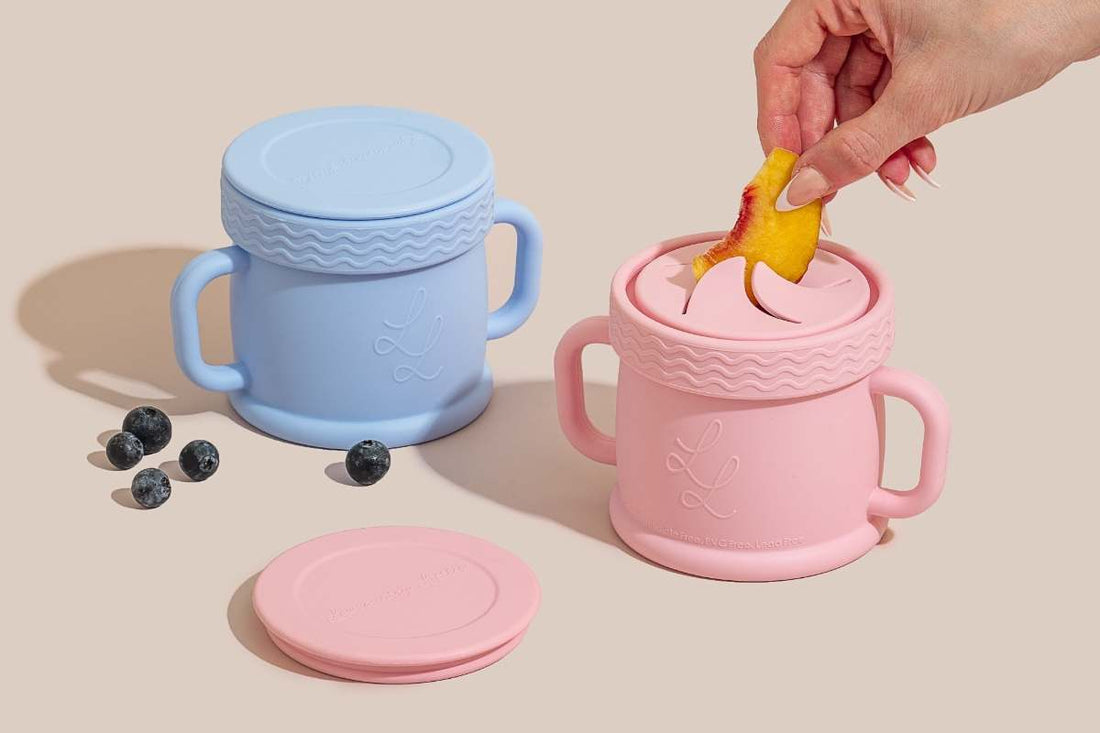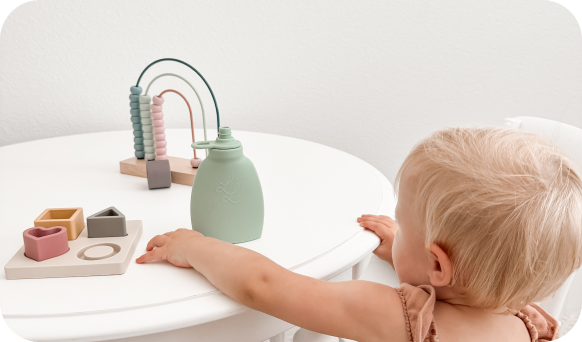What Our Kids Actually Eat Out Of Their Snack Cups

Hi, I’m Anna, mother of two kids. I believe kids should eat real food. Not empty addictive snacks. Not stuff that makes you wonder what’s inside. In our house, snack time was messy and loud. Crumbs piled up, crackers went half-eaten, and the sugar rush always led to meltdowns.
I knew I wanted better for Theo and Julia. That’s when I started filling their snack cups with healthy toddler snacks made from real ingredients, things that fuel their little bodies. In this guide, I’ll show you exactly what goes into those cups, how we rotate them to keep things fresh, and why this simple system gives me peace of mind and keeps the kids happy. Read on to learn more.
Why We Stopped Doing “Kid Snacks”
You know the ones: puffs, gummy “fruit” snacks, and those mystery-ingredient crackers. They’re easy, sure. But they’re also the reason snack time can lead to sugar crashes, mood swings, and empty calories. I wanted my kids to grow up knowing that snacks are food, not filler. And the easiest way to make that happen was to swap the processed stuff for real, whole-food options.

What We Pack Every Week
The secret is variety. I rotate a few favorites so the kids don’t get bored, but I also keep things simple enough that I’m not scrambling. Here’s our weekly go-to list for nutritious snack recipes:
- Grass-fed cheese cubes: Packed with protein and calcium for strong bones.
- Cut-up grass-fed beef sticks: A clean protein with no weird additives.
- Hard-boiled egg pieces: Simple, portable, and filling.
- Mini homemade meatballs: A fun way to sneak in veggies like grated zucchini or carrot.
- Homemade energy balls: Oats, nut butter, and a little honey for natural sweetness.
- Oatmeal bites: Soft, toddler-friendly, and easy to make ahead.
- Cashews, dates, or raisins: A small dose of healthy fats and natural sugar.
- Fresh fruit slices: Apples, pears, berries, or whatever’s in season.
Some days I mix sweet and savory. Other days I lean more on protein. But the big win? I know each cup is balanced enough to keep them satisfied until the next meal. Want to learn more? Check out our blog on Smart Snacking: Healthy Hard Snacks for Toddlers.
Why This Works for Us
Kids snack more often than adults. If every snack is just a mini-dessert, you’re missing opportunities to fuel their growth. By building snack cups around healthy toddler snacks, you:
- Keep their energy steady (no sugar spikes and crashes).
- Offer real nutrients like protein, healthy fats, and fiber.
- Teach them that “snack” isn’t code for “junk.”
And honestly? It makes life so much easier when you’ve got a plan.
How I Rotate Snacks Without Losing My Mind
It’s easy to fall into a rut with meal ideas for toddlers. I used to get stuck on the same three things until I figured out this trick:
- Protein Base: Start with one protein eggs, cheese, beef sticks, or meatballs.
- Produce Boost: Add fresh fruit or veggie sticks.
- Fun Factor: Toss in one “special” item like energy balls or a few cashews.
This three-step system keeps the cups exciting without extra work.
Avoiding Snack Cup Pitfalls
Skip the filler snacks. Avoid putting goldfish, animal crackers, or gummy “fruit” snacks in the cup. They’re mostly refined flour and sugar, so kids crash and get hungry fast. Instead, think protein + produce + one fun add-on: cheese cubes or egg pieces, sliced berries or apple, and a small treat like a few raisins or one oatmeal bite. That mix fuels play and keeps tummies happy.

To get detailed info, check out Snack Time Adventures: On-the-Go Feeding Tips for Busy Families
Fresh Ideas for Every Season
One of my favorite things about nutritious snack recipes is that they change with the seasons.
- Spring: Fresh berries, cucumber slices, soft cheese.
- Summer: Watermelon chunks, mini turkey patties, cherries.
- Fall: Apple slices with cinnamon, roasted pumpkin seeds, and cheddar cubes.
- Winter: Orange segments, dried figs, oatmeal bites.
This not only keeps the flavors fresh but also helps the kids connect with what’s in season.
How We Make It a Family Habit
Here’s the thing: snack cups aren’t just for the kids. I started making one for myself, too. I’ll toss in crushed almonds, berries, and a boiled egg. When they see me eating the same food, it sends a powerful message: this is real food for everyone. It saves time, it keeps dishes to a minimum, and it means I’m not grabbing random snacks for myself in between meals.

I don’t have to think about snacks every single day. Once a week, I prep the proteins and any homemade bites. Then it’s just a quick grab-and-go. No hunting for something “kid-friendly,” no emergency snack runs. And because I know the cups are full of healthy toddler snacks, I’m not worried about what’s fueling their playtime.
Our Pouch Pairing Strategy
Sometimes the kids’ snack cups travel with us to the park, on errands, or in the car. That’s where our pouches for toddlers come in. I’ll pair a snack cup with:
- A fresh homemade smoothie.
- Yogurt blended with mashed fruit and poured right into a pouch.
That way, they’re getting hydration, protein, and produce in one sitting. And if we’re heading out for longer, the pouches keep messes to a minimum.
Using the Snack Time Combo Pack:
I won’t lie, part of the reason this works so well is that I’ve got the right tools. We use our Snack Time Combo Pack every single day. It’s designed for both solid snacks and pouches, so I’m not juggling ten different containers. The lids seal tight, they fit in the kids’ hands, and I can wash everything in seconds.
The Little Smoothies System plays a role here, too. I use it to blend small-batch smoothies and yogurt mixes that go right into pouches, no spills. Good gear takes the chaos out of healthy eating.
The Bigger Picture
It’s not just about snacks. It’s about building habits. When you give kids balanced snacks now, you’re setting them up to make better food choices later. They learn what real food looks like, tastes like, and feels like in their bodies. That’s the kind of foundation I want for Theo and Julia and it starts with something as small as a snack cup.
Make the Switch Today
If you’re tired of the “snack struggle,” here’s your sign to make the switch. Start small. Pick one protein, one produce, and one fun add-on. Use tools like the Snack Time Combo Pack to make prep easy, and pair with pouches for toddlers for a balanced, on-the-go option.
You’ll be surprised how quickly it becomes second nature. And the best part? You’ll see the difference in your kids’ energy, focus, and moods. Ready to ditch the puffs and crackers for good? Head to our site and grab your Snack Time Combo Pack and The Little Smoothies System today, because snack time should fuel their adventures, not slow them down.
References:
1. National Institutes of Health (NIH). (2022). A high-sugar diet: Consumption, metabolism and behavioral effects. Retrieved from https://pmc.ncbi.nlm.nih.gov/articles/PMC9323357
2. EatingWell. (2025, March 14). 10 foods with more protein than an egg. Retrieved from
https://www.eatingwell.com/article/8065737/foods-with-more-protein-than-an-egg
3. Healthline. (n.d.). The 9 healthiest types of cheese and their benefits. Retrieved from
https://www.healthline.com/nutrition/healthiest-cheese
